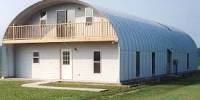Food packaging is a type of packaging system that is specifically designed for food. The materials and containers used to protect, store, and transport food products are referred to as food packaging. It is one of the most important aspects of the food industry processes because it protects food from chemical, biological, and physical alterations.
Food packaging’s main goal is to provide a practical way of protecting and delivering food goods at a reasonable cost while meeting the needs and expectations of both consumers and industries. It serves several important functions, including preserving food quality and freshness, informing consumers, and ensuring safety and convenience. Furthermore, current trends such as sustainability, environmental impact reduction, and shelf-life extension have gradually risen to the top of the priority list when designing a packaging system.
Here are some examples of common food packaging:
- Primary Packaging: This is the packaging that comes into contact with the food directly. It may include cans, bottles, jars, pouches, boxes, and trays. To maintain the quality of the food, primary packaging acts as a barrier against external elements such as moisture, light, and air.
- Secondary Packaging: The outer layer or additional packaging that contains and protects multiple units of primary packaging is referred to as secondary packaging. It could be a box, carton, or shrink wrap that is used for transportation, storage, or retail display.
- Tertiary Packaging: Tertiary packaging is used to handle, ship, and store multiple units of secondary or primary packaging in bulk. Pallets, stretch wrap, and large containers used to transport large quantities of goods are all included.
- Flexible Packaging: This type of packaging involves materials such as plastic films, laminates, and foils. It is widely used for items like snacks, frozen foods, and beverages. Flexible packaging is lightweight, cost-effective, and offers convenience in terms of portability and resealability.
- Rigid Packaging: Rigid packaging includes materials like glass, metal cans, and rigid plastic containers. It offers durability and protection for products that require a sturdier package, such as carbonated beverages, sauces, and soups.
- Modified Atmosphere Packaging (MAP): To extend the shelf life of perishable foods, MAP involves changing the composition of the atmosphere inside a package. It typically entails replacing oxygen with a mixture of gases such as nitrogen and carbon dioxide, which aids in spoilage reduction and product quality preservation.
- Labels and Printing: Labels and printing are frequently used on food packaging to provide consumers with important information. Product information, nutritional facts, ingredient lists, allergen warnings, and barcodes for scanning at the point of sale are all included.
Food packaging is critical in ensuring food safety, reducing food waste, and providing consumers with important information. It is constantly evolving in response to advances in materials, technology, and sustainability practices in order to meet the changing needs of the industry and consumer preferences.
















